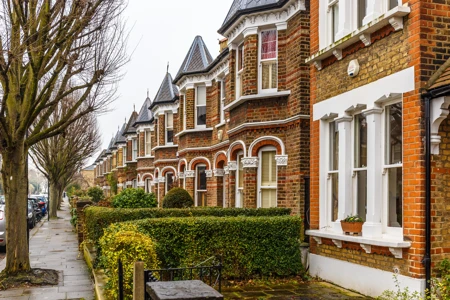Buy to Let mortgages are exactly what they sound like: they allow you to buy a property, but instead of living in it you’ll rent it out. They’re normally offered as a type of interest-only mortgage, but repayment mortgages are also available (usually if you know you’re keeping it as a long-term investment).
The process of getting a Buy to Let mortgage is similar to getting a residential mortgage, but rather than the borrowing based on your income, its based on the rent the property is likely to achieve each month. Let’s take a look at how it works.
What are Buy to Let mortgages for?
Buy to Let mortgages are popular with people who want to invest in the property market, even if it’s only in a small way. In an ideal world you’ll buy the property with your Buy to Let mortgage, cover the mortgage repayments with the rent you get from the tenant, then sell the property later when house prices have risen – leaving you with a magic pile of money!
But all investment is risky. When your Buy to Let mortgage term comes to an end, the value of your property might have fallen and not give you enough to repay the mortgage capital, or your could just break even. That’s why a Buy to Let mortgage comes with a bit of risk.
Who can get one?
Not everyone is eligible for a Buy to Let mortgage, and even if you are, it doesn’t mean you should jump right in. Before getting a Buy to Let mortgage, you should:
- Preferably already own a home, either outright or with a mortgage
- Understand that investing is property is risky, and be willing to lose money
- Have a good credit record
- Earn a certain amount of money annually; most lenders won’t give a Buy to Let mortgage to anyone who earns under £25,0000.
Aside from that, your mortgage lender will run the usual affordability checks to make sure you can afford repayments. The amount you can borrow depends on your income and outgoings, just as they would with a ‘normal’ mortgage.
What are the rules of a Buy to Let mortgage?
This type of mortgage comes with a bit of a catch, and only you can decide if it’s worth the investment.
- The fees for getting a Buy to Let mortgage are often higher than when you’re getting a residential mortgage.
- Most of these mortgages are interest only, which means that you never pay back the price of the actual property – just the interest on the mortgage! In short, when your term ends, you will still owe the full price of the home you took the mortgage out for.
- On top of that, the interest rates are likely to be higher than on a residential mortgage…
- … and you’ll need to put down a bigger deposit (usually at least 25%).
How do I get a Buy to Let mortgage?
Most large banks offer their own version of a Buy to Let mortgage, but it’s still important to shop around and find the best deal instead of automatically settling with your existing lender (if you have one).
As always, the best option is to talk to your mortgage broker. They can help you understand the ins and outs of Buy to Let mortgages and find a deal that meets your needs.
Disadvantages of a Buy to Let mortgage
- Your property might not always have tenants in it, which means there will be times when you’re paying the mortgage interest from your own pocket – not the income from their rent.
- Remember, being a landlord comes with responsibilities. You’ll have to manage the property and pay for things like necessary repairs as and when they arrive.
- The value of the property could fall as well as rise, which means you risk losing money. Remember, it’s not a guaranteed investment!
- If you sell the property for a profit, you’ll end up paying Capital GainsTax. The rules here are a bit tricky, so you’ll need a good accountant on your side. And remember, the money you get from rent is subject to income tax too.
- You can’t live in the property yourself, and there are extra rules around renting it to family.
Advantages of a Buy to Let mortgage
- Here’s the obvious one – if property prices rise, you could make a good profit!
- After you’ve factored in repair costs, mortgage interest and income tax, the rent your tenant pays could add a decent amount to your income.
There are some other types of interest-only mortgage, but they’re rare. Take a quick look at them here.
Important information
Your home may be repossessed if you do not keep up repayments on your mortgage.
There may be a fee for mortgage advice. The actual amount you pay will depend upon your circumstances. The fee is up to 1%, but a typical fee is £599.

